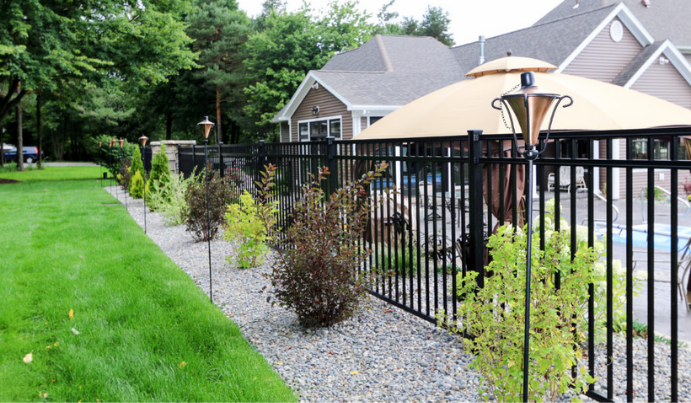Hey there! Looking to explore fence options for your contemporary home? Look no further than “http://fencedude.com” – a comprehensive blog dedicated to all things fences. With a focus on different types, sizes, shapes, and materials, this blog aims to provide reliable information that resonates with your interests. From wooden fences to chain-link, vinyl, and metal options, we’ll dive into the benefits, durability, maintenance, and aesthetic appeal of each. Plus, we’ll guide you on how to choose the appropriate size and shape based on your specific needs. So, whether you’re aiming to enhance privacy, ensure security, or add decorative elements to your property, we’ve got you covered. Stay tuned for a wide range of topics that will equip you with valuable knowledge and practical advice to make informed decisions when selecting and installing fences.
Types of Fences
When it comes to choosing the right fence for your property, there are various options available to consider. Each type of fence has its own set of characteristics, advantages, and disadvantages. In this article, we will explore the different types of fences and provide comprehensive information to help you make an informed decision.
Wooden Fences
Wooden fences are a popular choice for many homeowners due to their natural and rustic appearance. These fences can be made from different types of wood such as cedar, pine, or redwood. They offer a traditional and timeless look that can complement various architectural styles.
Some of the key advantages of wooden fences include their versatility in terms of design options, as they can be customized to suit your specific aesthetic preferences. Wooden fences also provide good privacy and are relatively easy to install. Additionally, with proper maintenance, wooden fences can have a long lifespan.
However, wooden fences require regular maintenance such as staining or painting to protect them from weathering and rotting. They may also be susceptible to damage from pests like termites. The cost of wooden fences can vary depending on the type of wood used and the design complexity.
Chain-link Fences
Chain-link fences, also known as wire-mesh fences, are a common choice for residential, commercial, and industrial properties. These fences are made from galvanized steel wire that is woven into a diamond-shaped mesh pattern. Chain-link fences offer durability, affordability, and functionality.
One of the primary advantages of chain-link fences is their low cost compared to other fence types. They are also relatively easy to install and require minimal maintenance. Chain-link fences are suitable for properties where visibility and airflow are important factors.
However, chain-link fences may not provide as much privacy as other types of fences. They are also not known for their aesthetic appeal and may not be the best choice for enhancing the curb appeal of your property. Additionally, chain-link fences may not be as secure as solid fences.
Vinyl Fences
Vinyl fences have gained popularity in recent years due to their durability and low maintenance requirements. These fences are made from PVC (polyvinyl chloride) material and are available in a wide range of styles and colors. Vinyl fences are known for their sleek and modern appearance.
One of the main advantages of vinyl fences is their resistance to rotting, fading, and discoloration. They are also relatively easy to clean and do not require painting or staining. Vinyl fences offer good privacy and can withstand harsh weather conditions.
However, vinyl fences may be more expensive upfront compared to other fence types. They may also become brittle over time in extreme cold temperatures. Additionally, the color options for vinyl fences may be limited compared to other materials.
Metal Fences
Metal fences, such as those made from steel or aluminum, offer a combination of strength, durability, and aesthetic appeal. These fences are available in various styles and designs, ranging from ornamental wrought iron to sleek and modern aluminum.
Some of the advantages of metal fences include their durability and low maintenance requirements. They are resistant to rotting, warping, and pests. Metal fences also provide a high level of security and can be customized to fit your specific requirements.
However, metal fences can be more expensive compared to other types of fences, especially if you opt for ornamental designs or high-quality materials. They may also require professional installation due to their weight and complexity. Metal fences may not provide as much privacy as solid fences.
Composite Fences
Composite fences are a relatively newer option in the market and are gaining popularity due to their eco-friendly nature and durability. These fences are made from a combination of wood fibers and recycled plastic materials. Composite fences offer the look of wood with the low maintenance benefits of plastic.
One of the key advantages of composite fences is their resistance to rot, splintering, and warping. They are also resistant to pests and do not require staining or sealing. Composite fences can be a good choice for those looking for a sustainable and low-maintenance fencing option.
However, composite fences can be more expensive compared to traditional wood fences. They may also have limited color options and can be prone to fading over time. Composite fences may not offer the same level of customization as other fence types.
Bamboo Fences
Bamboo fences provide a unique and natural look, making them a popular choice for those looking to create an eco-friendly and exotic ambiance in their outdoor spaces. Bamboo fences are made from bamboo poles that are bound together with wire or string.
One of the advantages of bamboo fences is their sustainability as bamboo is a fast-growing renewable resource. These fences also offer good privacy and are relatively easy to install. Bamboo fences can enhance the overall aesthetics of your property.
However, bamboo fences may not be as durable as other fence types, especially in harsh weather conditions. They require regular maintenance to prevent mildew and rot. Over time, bamboo fences may lose their vibrant color and require staining or painting.
Wrought Iron Fences
Wrought iron fences are known for their timeless elegance and durability. These fences are made from iron that is heated and shaped into intricate designs. Wrought iron fences can add a touch of elegance and sophistication to any property.
One of the main advantages of wrought iron fences is their strength and longevity. They are resistant to pests and can withstand harsh weather conditions. Wrought iron fences offer excellent security and can be customized to match the architectural style of your property.
However, wrought iron fences can be expensive compared to other fence types due to the labor-intensive manufacturing process. They may require professional installation and regular maintenance to prevent rusting and corrosion. Wrought iron fences may not provide as much privacy as solid fences.
Aluminum Fences
Aluminum fences offer the look of wrought iron while providing more affordability and low maintenance requirements. These fences are made from powder-coated aluminum that is resistant to rust, fading, and corrosion. Aluminum fences are available in a wide range of styles and finishes.
One of the main advantages of aluminum fences is their durability and lightweight nature. They are easy to install and require minimal maintenance. Aluminum fences offer good security without sacrificing the aesthetics of your property.
However, aluminum fences may not be as strong as wrought iron fences. They may not provide as much privacy and noise reduction compared to solid fences. Additionally, the cost of aluminum fences can vary depending on the design and finish options chosen.
Picket Fences
Picket fences are a classic and iconic choice for many homes, particularly in suburban areas. These fences are made from spaced vertical boards, usually with a pointed or rounded top. Picket fences are known for their charm, providing a decorative boundary for your property.
One of the advantages of picket fences is their versatility in terms of design options. They can be customized to match the architectural style of your home and can be painted in various colors. Picket fences offer good visibility and can enhance the curb appeal of your property.
However, picket fences may not provide as much privacy as solid fences. They may require regular maintenance such as painting or staining to prevent rotting and weathering. Picket fences may also not be the best choice for properties with high-security needs.
Privacy Fences
Privacy fences are specifically designed to provide maximum privacy and security for your property. These fences are typically tall and solid, blocking the view from the outside. Privacy fences can be made from various materials such as wood, vinyl, or composite.
One of the key advantages of privacy fences is their ability to create a secluded and peaceful environment. They can reduce noise and block unwanted views. Privacy fences are often used to enclose backyard spaces and create a safe haven for families.
However, privacy fences may not offer as much airflow and visibility compared to other fence types. They may also be more expensive due to their size and materials used. Privacy fences may require regular maintenance to prevent warping and discoloration.
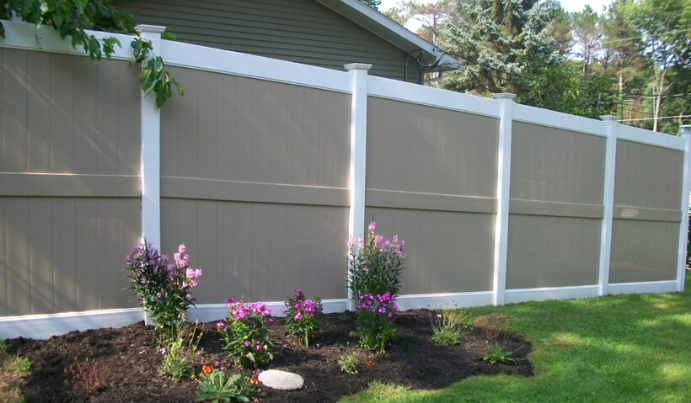
Factors to Consider
Now that we have explored the different types of fences, it is important to consider various factors when choosing the right fence for your property. These factors will help you determine the most suitable fence size, shape, and material based on your specific needs and requirements.
Property Size
The size of your property plays a crucial role in determining the type of fence that is most appropriate. Consider the overall dimensions of your property, as well as any specific areas that need to be enclosed or protected. A large property may require a fence that spans a larger distance, while a smaller property may benefit from a more compact fence design.
Desired Level of Enclosure
Think about the level of privacy and enclosure you desire for your property. If you value privacy and want to block the view from the outside, a solid or semi-solid fence may be the best option. On the other hand, if you prefer a more open and airy feel, a fence with gaps or spacing between the boards may be more suitable.
Architectural Considerations
Consider the architectural style of your home and the overall aesthetic you want to achieve. Your fence should complement the existing design elements and enhance the curb appeal of your property. For example, if you have a modern home, a sleek and minimalistic fence design may be a good match.
Local Building Codes
It is important to familiarize yourself with the local building codes and regulations regarding fence installation in your area. Check if there are any height restrictions, setback requirements, or specific materials that are allowed or prohibited. Compliance with local regulations will ensure a smooth and hassle-free installation process.
Budget
Establishing a budget for your fence project is essential. Fences can vary significantly in cost depending on the materials used, size, design complexity, and installation requirements. Consider the upfront cost as well as long-term maintenance and repair expenses when determining your budget.
Maintenance Requirements
Different fence materials have different maintenance needs. Some materials may require regular staining or painting, while others may only need occasional cleaning. Consider the amount of time and effort you are willing to invest in maintaining your fence and choose a material that aligns with your maintenance preferences.
Lifespan
Take into account the expected lifespan of the fence materials you are considering. Some materials, like vinyl and aluminum, are known for their durability and longevity. Others, such as wood, may require more frequent maintenance and have a shorter lifespan. Balance the cost with the expected lifespan to determine the best long-term investment.
Aesthetic Appeal
Your fence should not only serve functional purposes but also enhance the overall aesthetics of your property. Consider the style, color, and design options available for each type of fence. Choose a fence that complements the architectural style of your home and reflects your personal taste and preferences.
Security Needs
Evaluate the level of security you require for your property. If security is a top priority, consider fences that offer solid panels, minimal gaps, and sturdy materials. Look for features like locks, gates, and additional security measures that can be incorporated into your fence design.
Privacy Requirements
If privacy is important to you, select a fence that provides the desired level of privacy. Solid panels or fences with minimal spacing between boards can offer greater privacy. Consider the height and design of the fence to ensure maximum privacy while still meeting local regulations.
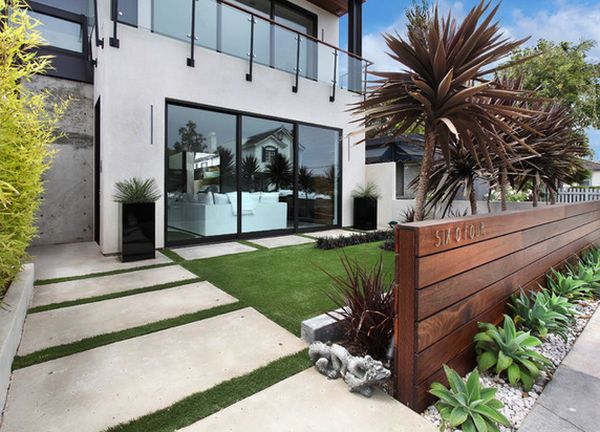
Choosing the Right Fence Size and Shape
Now that we have considered the factors involved in choosing the right fence, let’s delve deeper into determining the appropriate size and shape for your fence. These considerations will help you find the perfect fit for your property.
Property Size and Layout
The size and layout of your property will influence the size and shape of the fence you choose. Measure the boundaries and visualize how the fence will fit within the overall space. Consider any unique features, such as slopes or curves, that may require custom sizes or shapes.
Level of Privacy and Security
Think about the level of privacy and security you need from your fence. If privacy is important, a taller fence with minimal spacing between boards may be ideal. For security purposes, consider higher fences with sturdy materials and additional features like locks and gates.
Aesthetic Considerations
Align the size and shape of your fence with the architectural style of your property. Consider the overall aesthetic you want to create. For example, a modern home may benefit from a sleek and minimalistic fence design, while a traditional home may require a more ornamental or decorative fence.
Landscaping Integration
Take into account the existing landscaping elements and how the fence will integrate with them. Consider the placement of trees, shrubs, and flowers to ensure they are not obstructed or affected by the fence. The fence should complement the overall landscaping design and enhance the beauty of your outdoor space.
Compliance with Local Regulations
Check the local regulations regarding fence height, setback requirements, and any other restrictions that may impact the size and shape of your fence. Ensure that your chosen fence size and shape align with the legal requirements to prevent any potential issues or conflicts.
Factors That Influence Size and Shape
Several factors can influence the size and shape of your fence, such as desired level of enclosure, privacy needs, and architectural considerations. Balancing these factors will help you determine the most suitable fence size and shape for your property.
Popular Fence Sizes and Shapes
There is no one-size-fits-all approach to fence sizes and shapes, as they can vary based on individual preferences and property requirements. However, some popular fence sizes and shapes include six-foot-high privacy fences, four-foot-high picket fences, and ornamental fences with decorative arches or curves.
Creative Fence Designs
Get creative with your fence design by incorporating unique shapes and patterns. Explore options such as scalloped tops, lattice work, or alternating board heights. Customizing your fence design can add a touch of personality and individuality to your property.
Customization Options
Most fence types offer customization options in terms of size and shape. Work with a professional fence installer to discuss your specific needs and preferences. They can guide you on custom sizes and shapes that are feasible based on the materials and installation techniques.
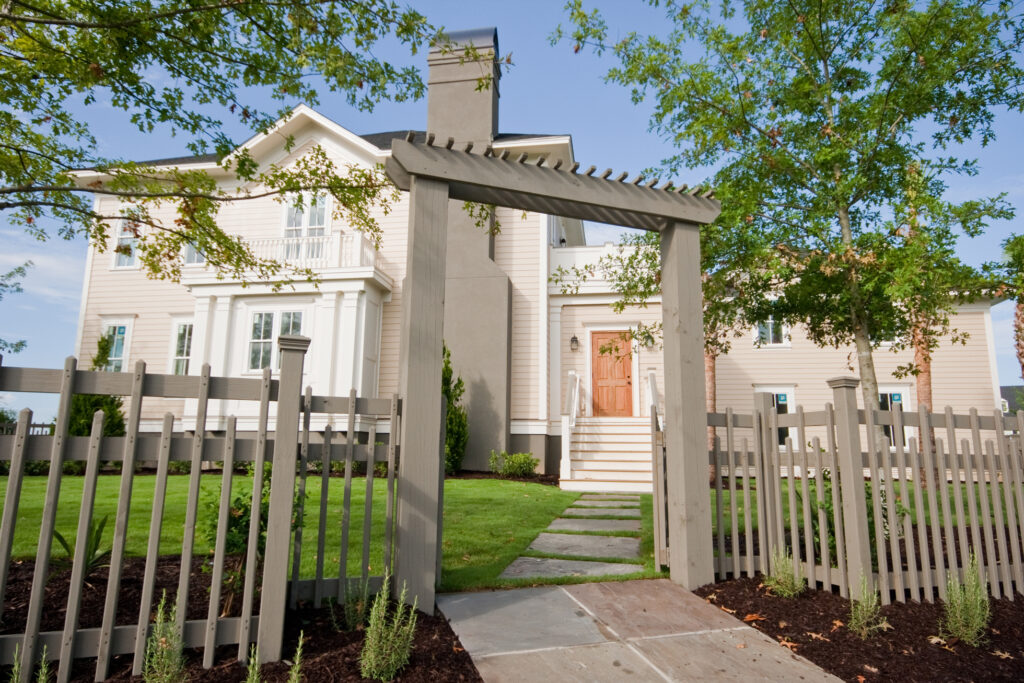
FAQs about Choosing Fence Size and Shape
-
Q: Can I choose a fence size and shape that differs from my neighbor’s fence?
A: Yes, you have the flexibility to choose a fence size and shape based on your own requirements. However, it is important to respect your neighbor’s property boundaries and comply with local regulations.
-
Q: How tall should my fence be for privacy?
A: The height of your fence for privacy will depend on your specific needs and local regulations. Typically, a six-foot-high fence provides a good level of privacy, but you may need to check the requirements in your area.
-
Q: Can I combine different fence sizes and shapes on my property?
A: Yes, it is possible to combine different fence sizes and shapes to create a unique and visually appealing look. This can be particularly effective when different areas of your property have different requirements.
-
Q: Are there any specific regulations for fence size and shape in my area?
A: Yes, each locality may have its own regulations and restrictions regarding fence size, height, setback requirements, and materials. Contact your local planning or building department to obtain the relevant information.
-
Q: Can I use a fence to block noise from the road?
A: While no fence can completely eliminate all noise, certain fence types, such as solid fences or fences with sound-absorbing materials, can help reduce noise levels and create a more peaceful environment.
-
Q: How can I ensure my fence size and shape comply with local regulations?
A: Consult local building codes and regulations or contact a professional fence installer who is familiar with the requirements in your area. They can provide guidance and ensure your fence meets all necessary regulations.
-
Q: Can I modify the size or shape of my existing fence?
A: Depending on the materials and current design, it may be possible to modify the size or shape of your existing fence. Consult a professional fence contractor to assess the feasibility and discuss possible options.
-
Q: Are there any recommended fence sizes or shapes for homes with pets?
A: If you have pets, consider a fence size and shape that ensures their safety and containment. A fence with minimal spacing between boards and a height suitable for your pets’ size will help prevent them from escaping.
-
Q: What should be the shape of a fence gate?
A: The shape of a fence gate can vary depending on the overall design of the fence. The gate should complement the fence style and provide functional access while maintaining the security and aesthetics of the fence.
-
Q: Can I install a fence without the help of a professional?
A: While it is possible to install a fence yourself, it is recommended to hire a professional fence installer for optimal results. They have the expertise, tools, and knowledge to ensure a proper and secure installation.
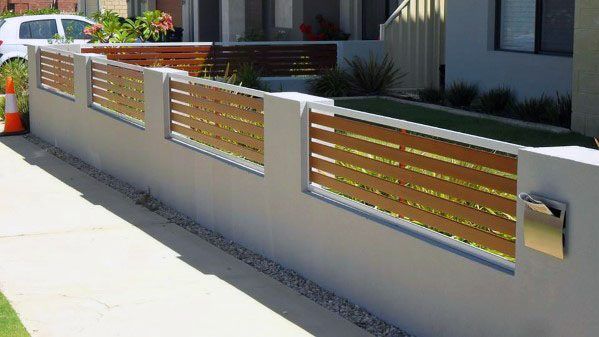
Temporary Fencing Options
In addition to permanent fencing solutions, there are also temporary fencing options available for various applications. Temporary fences offer versatility and flexibility, making them ideal for situations that require a temporary enclosure or boundary.
Uses and Applications of Temporary Fences
Temporary fences can serve a wide range of purposes in different settings. They are commonly used in construction sites to demarcate the work area and enhance safety. Temporary fences are also suitable for events and crowd control, creating designated and controlled spaces for attendees.
Portable and Easy-to-install Fencing
Temporary fences are designed to be portable and easy to install. They often consist of lightweight panels or posts that can be quickly assembled and disassembled as needed. This makes them ideal for temporary needs or situations that require frequent setup and takedown.
Temporary Fence Materials
Temporary fences can be made from various materials, including chain-link, metal, plastic, or mesh. The choice of material will depend on the specific application and durability requirements. Some temporary fences may also feature additional features like gates or barricades for added convenience.
Demarcating Construction Sites
One of the primary applications of temporary fences is demarcating construction sites. These fences help establish clear boundaries, prevent unauthorized access, and enhance safety for workers and the public. Temporary construction site fences are often durable and resistant to impact.
Event and Crowd Control
Temporary fences are widely used for event and crowd control. They can help define designated areas for attendees, maintain orderly traffic flow, and enhance security. Temporary event fences are often sturdy enough to deter unauthorized entry and can be customized with branding or signage.
Temporary Pool Fences
For properties with temporary or seasonal pools, temporary pool fences can provide safety and compliance with local regulations. These fences are designed to be easily installed and removed to create a secure enclosure around the pool area. Temporary pool fences are made from durable materials that can withstand outdoor conditions.
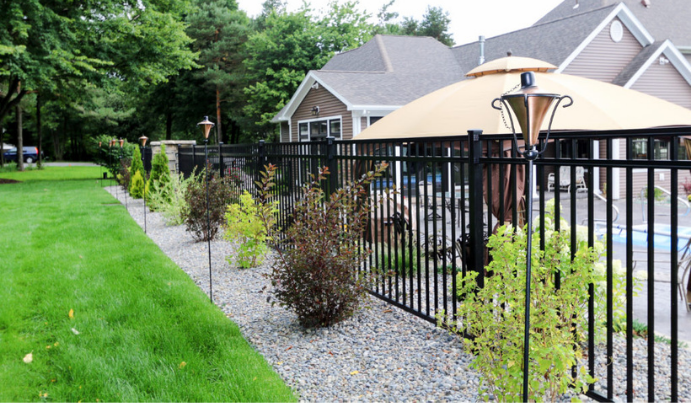
FAQs about Temporary Fencing
-
Q: Can temporary fences be used for long-term applications?
A: While temporary fences are primarily designed for short-term use, some can be used for longer durations. However, consider the durability, maintenance requirements, and regulations specific to your area when using temporary fences for extended periods.
-
Q: Are temporary fences easy to dismantle and move?
A: Yes, temporary fences are designed to be easily disassembled and moved. They are often lightweight and require minimal tools or equipment for installation or removal.
-
Q: Can temporary fences be customized to match my event or branding?
A: Yes, temporary fences can often be customized with branding, signage, or color options to match your event or branding requirements. Discuss customization options with temporary fence suppliers.
-
Q: Are temporary fences suitable for securing construction sites?
A: Yes, temporary fences are commonly used to secure construction sites. They provide a visible barrier, deter unauthorized access, and help maintain safety for workers and the public.
-
Q: Can temporary fences be used for pet containment?
A: Temporary fences can be used for temporary pet containment, such as creating a safe area in the backyard. However, consider the durability and security of the temporary fence materials to ensure the safety of your pets.
-
Q: Can I install a temporary fence myself?
A: Temporary fences are designed for easy installation and can be installed by individuals with basic DIY skills. However, for larger or more complex projects, it is recommended to consult a professional or rely on temporary fence rental services.
-
Q: What is the average lifespan of a temporary fence?
A: The lifespan of a temporary fence can vary depending on factors such as the material used, weather conditions, and frequency of use. Some temporary fences may last for several years with proper care, while others may have a shorter lifespan.
-
Q: Do temporary pool fences meet safety regulations?
A: Temporary pool fences should comply with local safety regulations and be installed according to specific requirements. It is important to research and understand the pool fencing regulations in your area to ensure compliance.
-
Q: Can I rent temporary fences instead of purchasing them?
A: Yes, temporary fences are often available for rental from specialized companies. Renting can be a cost-effective solution for short-term needs or occasions where you do not want to invest in purchasing a fence.
-
Q: Are temporary fences available in different heights and sizes?
A: Yes, temporary fences are available in various heights and sizes to accommodate different applications and site-specific requirements. Discuss your specific needs with temporary fence suppliers to find the most suitable size and height.
Please note that the answers provided in the FAQs section are general in nature and may not encompass all specific situations or regulations. It is important to consult local authorities, professionals, or relevant resources for accurate and up-to-date information concerning your specific location and circumstances.
